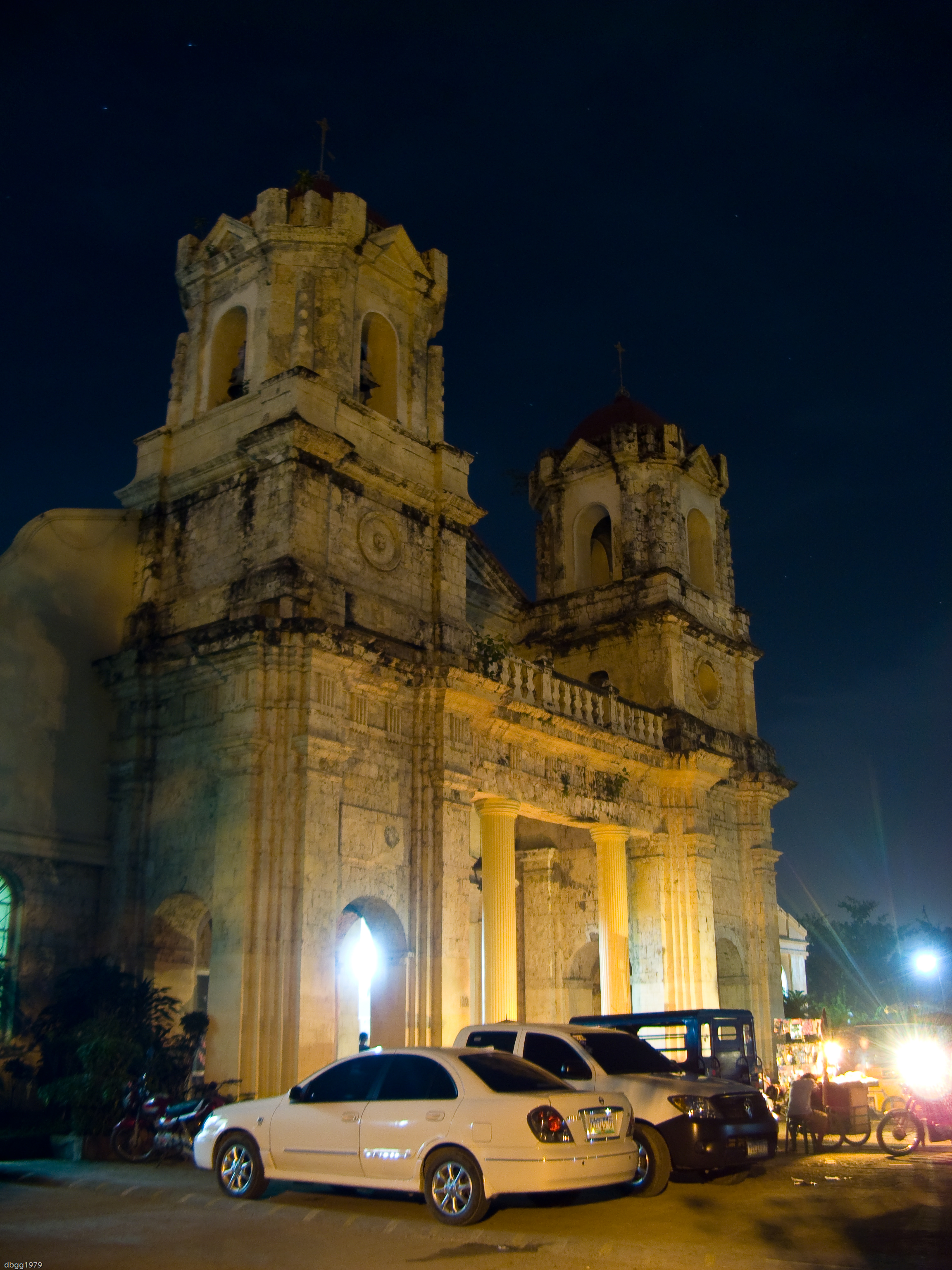|
Archdiocesan Shrine Of Santa Teresa De Avila
The Archdiocesan Shrine of Santa Teresa de Avila, previously known as Santa Teresa de Avila Church, is a Roman Catholic church located in Talisay, Cebu, Philippines. Built in 1836 until 1848, architecturally, the church is in classical Graeco-Roman style, featuring the facade's two bell towers connected by a porch with two supporting columns on the foyer. On October 15, 2007, it was declared an archdiocesan shrine and pilgrims could receive plenary indulgence for a year. Design The church was made from coral stones and contained embellished interiors and five gilded altars. Its original design was cruciform with two semicircular transepts and the twin belfries on each side of the façade, with a connecting balustraded portico that is supported by two columns on the main entrance, are its prominent feature. Inside, hanging above the crossing is a large round chandelier. According to Filipinas Heritage Library, the church used "round arch, rectangular piers with engaged shafts, a ... [...More Info...] [...Related Items...] OR: [Wikipedia] [Google] [Baidu] |
Talisay, Cebu
Talisay, officially the City of Talisay ( ceb, Dakbayan sa Talisay; fil, Lungsod ng Talisay), is a 3rd class component city in the province of Cebu, Philippines. According to the 2020 census, it has a population of 263,048 people. The name of Talisay is taken from the talisay tree which is abundant in the city. History Talisay was founded in 1648 as an estate owned by the Augustinians. In 1849 it was converted into a municipality. During both the American colonial period and World War II, Talisay served as a haven of colonial military forces. The municipality served as the center of guerrilla intelligence operations for the Philippine resistance movement in Cebu during World War II. The returning U. S. liberation forces landed on the beaches of Talisay on March 28, 1945, and were helped together with the Philippine Commonwealth forces and the Cebuano guerrillas, an event that marked the eventual surrender of Japanese forces on Cebu. That day is now an official holiday in ... [...More Info...] [...Related Items...] OR: [Wikipedia] [Google] [Baidu] |
Transept
A transept (with two semitransepts) is a transverse part of any building, which lies across the main body of the building. In cruciform churches, a transept is an area set crosswise to the nave in a cruciform ("cross-shaped") building within the Romanesque and Gothic Christian church architectural traditions. Each half of a transept is known as a semitransept. Description The transept of a church separates the nave from the sanctuary, apse, choir, chevet, presbytery, or chancel. The transepts cross the nave at the crossing, which belongs equally to the main nave axis and to the transept. Upon its four piers, the crossing may support a spire (e.g., Salisbury Cathedral), a central tower (e.g., Gloucester Cathedral) or a crossing dome (e.g., St Paul's Cathedral). Since the altar is usually located at the east end of a church, a transept extends to the north and south. The north and south end walls often hold decorated windows of stained glass, such as rose windows, in sto ... [...More Info...] [...Related Items...] OR: [Wikipedia] [Google] [Baidu] |
19th-century Roman Catholic Church Buildings In The Philippines
The 19th (nineteenth) century began on 1 January 1801 (Roman numerals, MDCCCI), and ended on 31 December 1900 (Roman numerals, MCM). The 19th century was the ninth century of the 2nd millennium. The 19th century was characterized by vast social upheaval. Slavery was abolitionism, abolished in much of Europe and the Americas. The Industrial Revolution, First Industrial Revolution, though it began in the late 18th century, expanding beyond its British homeland for the first time during this century, particularly remaking the economies and societies of the Low Countries, the Rhineland, Northern Italy, and the Northeastern United States. A few decades later, the Second Industrial Revolution led to ever more massive urbanization and much higher levels of productivity, profit, and prosperity, a pattern that continued into the 20th century. The Gunpowder empires, Islamic gunpowder empires fell into decline and European imperialism brought much of South Asia, Southeast Asia, and almost ... [...More Info...] [...Related Items...] OR: [Wikipedia] [Google] [Baidu] |
1836 Establishments In The Philippines
Events January–March * January 1 – Queen Maria II of Portugal marries Prince Ferdinand Augustus Francis Anthony of Saxe-Coburg-Gotha. * January 5 – Davy Crockett arrives in Texas. * January 12 ** , with Charles Darwin on board, reaches Sydney. ** Will County, Illinois, is formed. * February 8 – London and Greenwich Railway opens its first section, the first railway in London, England. * February 16 – A fire at the Lahaman Theatre in Saint Petersburg kills 126 people."Fires, Great", in ''The Insurance Cyclopeadia: Being an Historical Treasury of Events and Circumstances Connected with the Origin and Progress of Insurance'', Cornelius Walford, ed. (C. and E. Layton, 1876) p76 * February 23 – Texas Revolution: The Battle of the Alamo begins, with an American settler army surrounded by the Mexican Army, under Santa Anna. * February 25 – Samuel Colt receives a United States patent for the Colt revolver, the first revolving barrel multishot firearm. ... [...More Info...] [...Related Items...] OR: [Wikipedia] [Google] [Baidu] |


